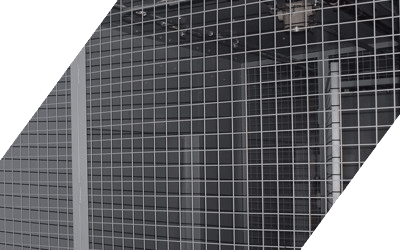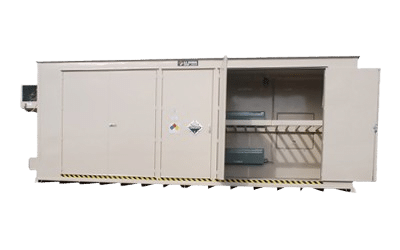Fire Suppression
The ability to quickly control chemical fires increases safety and peace of mind when storing hazardous materials. Our effective and compliant fire suppression systems and accessories help save lives and costly materials in the event of an emergency.

Types of Chemical Storage Fire Suppression
Dry Chemical Storage Fire Suppression
U.S. Chemical offers automatic dry chemical fire suppression systems. These pre-engineered systems meet NFPA 17 and protect against A, B, and C type fire hazards.
The systems feature fusible links designed to melt at a specific temperature to release tension on the detection cable. This will cause the mechanical controls on the tank to release the agent through a distribution piping network located on the ceiling.
Features & Benefits
- Meets NFPA 17
- UL and ULC Listed
- Multiple suppression tank sizes available
- Protects against A, B, C type hazards
- FM Approved
Water Sprinkler
Our premium fire suppression system features a reliable, UL Listed and FM approved water sprinkler head. U.S. Chemical Storage sprinklers release powerful amounts of water to quickly control and eliminate chemical fires.
Water sprinklers are designed to be installed on the ceiling of the building and are customizable with optional water flow sensors, alarms and shut down contacts.
Features & Benefits
- Available in 1,2,3,4, or 5 nozzle systems
- FM approved nozzle
- UL Listed nozzle
Fire Extinguisher
Equip your chemical storage or processing building with a fire extinguisher to provide your team with the best defense against fires. Mount the fire extinguisher on the wall within your storage building, to be on-hand in the event of a fire. All extinguishers come equipped with a mounting bracket for on-site installation and are rated for Class A, B, and C fires.
Available in the Following Sizes
- 5 lb.
- 10 lb.
- 20 lb.
Features & Benefits
- Weather-resistant steel construction
- Chemical & UV resistant coating
- Can be manufactured to meet EPA, NFPA 30 and NFPA 1
- Continuously welded, leak-tested sump
- Walk-in or rack style available
- 15-year structural warranty
Common Applications
- Hazardous Waste Storage
- Flammable and Combustible Storage
- Paint and solvent Storage
Downloadable Information & Fact Sheets
- Drawing: 2-Hour Bi-Direction Fire Rated Building (FL6115)
- Design Your Explosive Storage Magazine
- Warranty on Building & Accessories
- Buy or Build Chemical Storage Brochure
- Infographic: Choosing a Chemical Storage Building
- FireLoc 1-page Sheet
Compliance & Approvals
At U.S. Chemical Storage we strive to give you the best solution for your operations. This building and its accompanying accessories can be engineered to meet the following approvals and certifications based upon your unique set of needs.
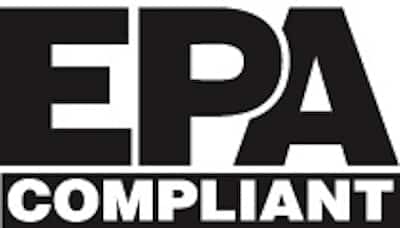
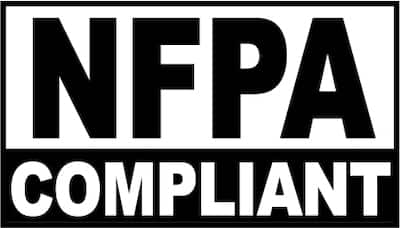


Frequently Asked Questions
First consult the Safety Data Sheet (SDS) to determine the type of chemical you’re storing and any storage requirements listed. There are two main classifications of buildings to consider: fire-rated and non-fire-rated steel buildings.
There are three main questions you should answer before engineering or design can begin on your building: what is to be stored, how much of it is being stored, and where is the location it will be stored? You will also need to consult with your local “Authority Having Jurisdiction” (AHJ) or local code expert to determine your area’s specific storage building requirements.
Our team at U.S. Chemical Storage has a wealth of knowledge, experience, and resources to help analyze your storage needs, but the final approval is made by the local AHJ, so you will need to ultimately ask them about your requirements early in the planning process.
The definition of a “sump” is a pit or reservoir providing containment for spilled liquids. U.S. Chemical Storage offers leak-proof spill containment sumps in each standard model. All our sumps are tested for leaks for a 24-hour period prior to finishing. The sump is then covered by a steel or fiberglass floor grating and can even be equipped with a resistant plastic sump liner to protect against corrosive chemical accidental spills. The size of the sump is dictated by code based on the volume of liquid being stored within the building.
Building size is determined by the amount of hazardous material you are planning to store, the need for occupancy or inspection around these materials, and must take into consideration the most efficient way of moving these materials into and out of your chemical storage building.
Location of the building can be either inside another building or outside to fit your needs. Fire Separation, which is the amount of fire rating required between two occupancies, or the separation distance between those two occupancies, is determined by the type of chemical or hazard being stored, and distances between buildings, egress pathways, or environmental features. To determine the required fire separation, it is best to consult with your local code authority. Inside another building or within 10 feet of another building, you’ll be required to have a 4-hour fire rating. If your hazmat storage building is located at distances 30 feet or greater your building may not be required to have a fire rating at all.
Request a Quote
Other Types of Indoor Accessories
Flooring
Finding the right flooring for your chemical storage building is easy with the many U.S. Chemical Storage options.
Gas Sensors and Other Detection Systems
Improving employee safety means stopping problems before they even start. We offer a full line of gas sensors to do just that.
Partition Walls
Segregating chemicals with partition walls allows for the storage of multiple chemicals inside the same chemical storage building.
Racks and Shelves
Let U.S. Chemical Storage help you get organized with a full line of storage racks and shelves to keep your chemicals sorted.
RELATED ARTICLES
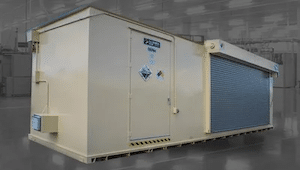
How To Store Lithium Batteries
Lithium batteries are often used in today’s electronic environments.
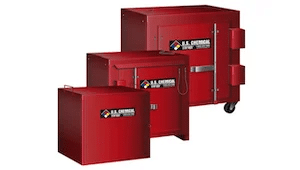
Explosive Storage Magazines
Prevent accidents by storing your high and low explosives properly.

Pharma Hazmat Storage
This manufacturing process needed a compliant 90 day storage solution.




